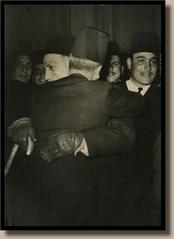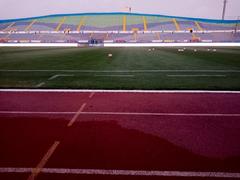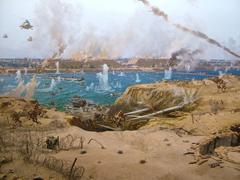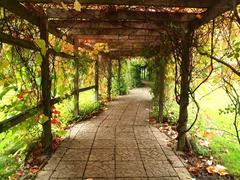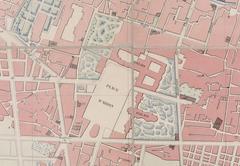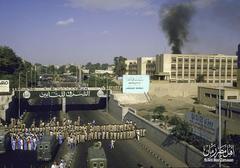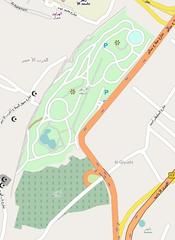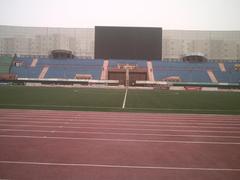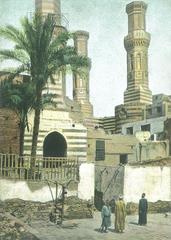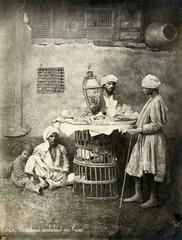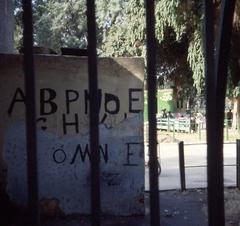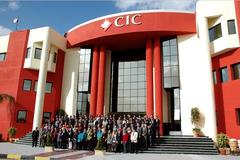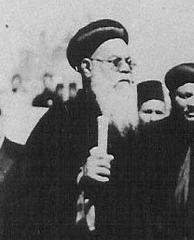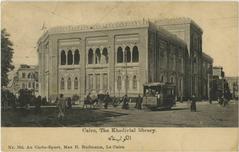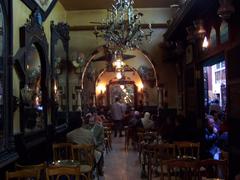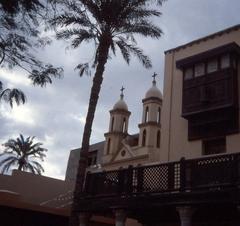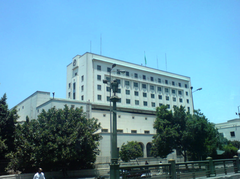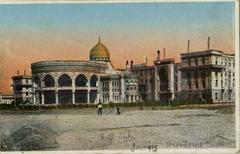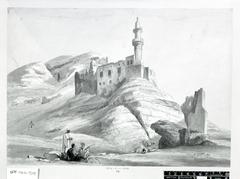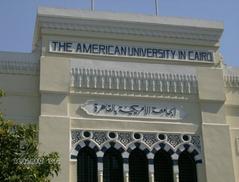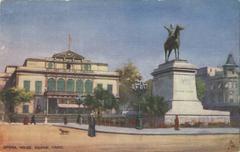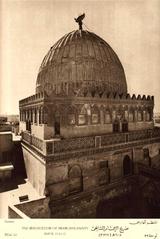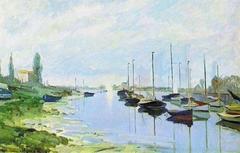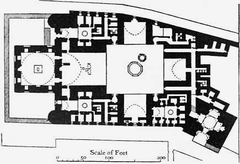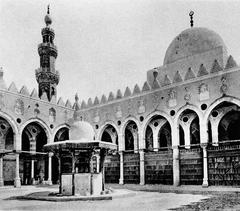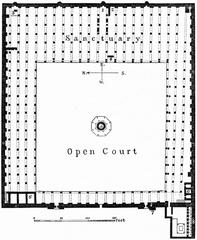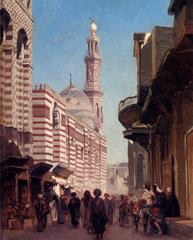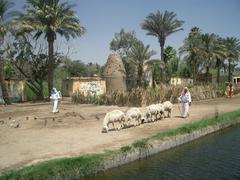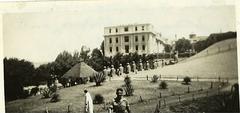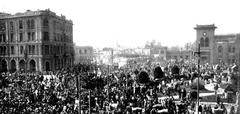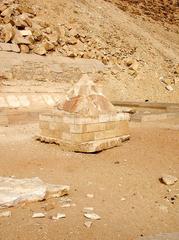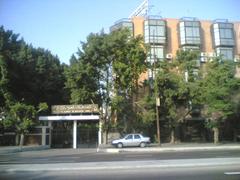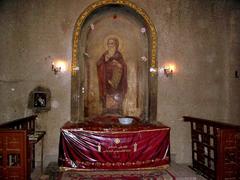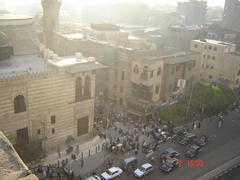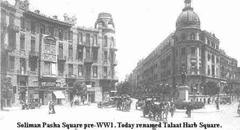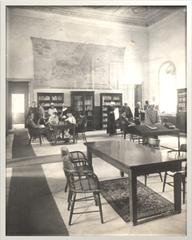
Zaafarana Palace Visiting Hours, Tickets, and Complete Guide to Cairo’s Historic Gem
Date: 14/06/2025
Introduction
Zaafarana Palace, also known as the Saffron Palace (Arabic: قصر الزعفران), stands as a stately emblem of Cairo’s royal legacy and architectural grandeur. Commissioned in the late 19th and early 20th centuries, the palace reflects Egypt’s transition from Ottoman rule through modernization, later serving as a venue for pivotal political events and eventually as the administrative headquarters of Ain Shams University. Its unique blend of European and Egyptian design, storied history, and continued educational role make Zaafarana Palace both a living monument and an essential destination for travelers and history enthusiasts.
This comprehensive guide explores Zaafarana Palace’s origins, architectural highlights, historical significance, visitor information—including opening hours and ticketing—travel tips, and nearby attractions. For the latest updates, consult the Ain Shams University portal, Connolly Cove, and Egypt Independent.
Contents
- Introduction
- Palace Origins and Historical Context
- Architectural Features and Preservation
- Political and Educational Significance
- Visiting Zaafarana Palace: Hours, Tickets, and Accessibility
- Travel Tips & Nearby Attractions
- FAQs
- Conclusion
- Sources
Palace Origins and Historical Context
Zaafarana Palace was originally commissioned during the reign of Khedive Isma’il Pasha, with construction spanning the late 19th and early 20th centuries. Notably, Princess Jananiar Hanim and Princess Jeshm Afat Hanim, widows of Khedive Isma’il, were instrumental in its creation, with Italian architect Antonio Lasciac designing the palace to reflect Egypt’s cosmopolitan aspirations (ASU Portal). Named for the saffron fields that once surrounded it, the palace became a symbol of Cairo’s modernization and social prestige, set in the Heliopolis district alongside other landmarks like the Baron Empain Palace and the Presidential Palace (Cairo Top Tours).
Architectural Features and Preservation
Exterior and Layout
Zaafarana Palace is a harmonious blend of European Baroque, Rococo, and Gothic styles with Islamic and Egyptian design elements. The palace’s exterior is marked by ornate façades, semicircular arched windows, and balconies adorned with floral stucco work and botanical motifs. The entrance gate prominently displays Khedive Ismail’s initials and crown, while stained glass and small towers evoke a sense of royal grandeur (Connolly Cove).
Interior Details
Inside, the palace features:
- Grand Halls: Opulent reception rooms with high, frescoed ceilings and marble floors.
- Stained-Glass Windows: Colorful glasswork filters sunlight, creating vibrant patterns in the halls and winter garden.
- Columns and Decorative Motifs: Greco-Roman marble columns with gilded capitals and delicate plasterwork.
- The “Japanese Room”: A unique space reflecting early 20th-century artistic trends.
- Functional Layout: Three main floors (plus a basement) organized for royal ceremonies, family life, and service efficiency (Connolly Cove).
Gardens
Although reduced in size from their original state, the palace gardens still echo the splendor of the Khedival era, providing tranquil spaces for visitors.
Preservation
Registered as an Islamic monument in 1985, Zaafarana Palace has been restored to retain its historical fabric and now houses the Zaafarana Palace Archaeological Museum (Egypt Independent).
Political and Educational Significance
Beyond its architectural allure, Zaafarana Palace is steeped in modern Egyptian history:
- Royal Residence: A reputed birthplace of King Farouk and a venue for royal gatherings.
- Diplomatic Milestones: Hosted the 1936 Anglo-Egyptian Treaty signing and the 1945 founding of the Arab League.
- Educational Transition: Served as the administrative headquarters of Ain Shams University from 1950 onwards, symbolizing Egypt’s dedication to education and public service.
Visiting Zaafarana Palace: Hours, Tickets, and Accessibility
Location
Within the main campus of Ain Shams University, Abbassia district, Cairo. Easily accessible via Abbassia metro station, taxis, and ride-sharing services.
Opening Hours
- Museum: Typically open Sunday–Thursday, 9:00 AM–4:00 PM. Closed Fridays and public holidays.
- Special Events & Tours: The palace may open during cultural events or by arrangement for guided tours. Always check with Ain Shams University or local tour operators for up-to-date schedules.
Admission (Tickets)
- General Admission: Modest fee (approx. 60 EGP for adults); discounts for students, children, and Egyptian nationals.
- University Events: Entry is often free during official university or cultural events.
- Group Visits: Arrange in advance for educational or group tours.
Guided Tours
- Offered in Arabic and English. Book at the entrance or through the university’s cultural affairs office.
Accessibility
- Ramps and handrails are in place at key entry points, but some areas remain challenging due to the historic structure. Contact staff in advance for assistance.
Facilities
- Restrooms, a small gift shop, and limited seating are available. Photography is generally permitted (no flash or tripods in sensitive areas).
Travel Tips & Nearby Attractions
- Best Time to Visit: March–April and October–November offer comfortable weather (Travellers Worldwide).
- Dress Code: Modest attire is recommended; lightweight, breathable fabrics suit Cairo’s climate.
- Stay Hydrated: Carry water, especially during warmer months.
- Security: Standard security checks apply; bring valid ID.
- Nearby Attractions:
- Baron Empain Palace
- Presidential Palace
- Mosque of Ibn Tulun
- Cairo Citadel
- National Museum of Egyptian Civilization
- Egyptian Museum in Tahrir Square (Local Guide to Egypt)
FAQs
Q: What are Zaafarana Palace’s visiting hours?
A: Open Sunday–Thursday, 9:00 AM–4:00 PM. Closed Fridays and public holidays. Always confirm before visiting.
Q: How much are tickets to Zaafarana Palace?
A: Entry fees are modest (approx. 60 EGP for adults); discounts for students and children. Free during some university events.
Q: Are guided tours available?
A: Yes, in Arabic and English. Book at the entrance or through the university in advance.
Q: Is the palace wheelchair accessible?
A: Partially. Ramps and staff assistance are available, but some areas may be difficult to access.
Q: Can I take photographs inside the palace?
A: Yes, but flash and tripods may be restricted.
Q: How do I get there?
A: Take the metro to Abbassia station or use taxis/ride-share services to reach Ain Shams University.
Conclusion
Zaafarana Palace is a living monument that bridges royal heritage, political milestones, and Egypt’s ongoing commitment to education. Its meticulously restored interiors, historically significant events, and vibrant museum collections make it a must-visit for anyone exploring Cairo’s rich cultural landscape. Plan ahead for visiting hours and events, and take advantage of guided tours for a deeper appreciation of this unique treasure.
For current information on visiting hours, ticketing, and special events, consult the official Ain Shams University website or trusted travel resources. Enhance your Egyptian journey with the Audiala app for curated tours, ticket bookings, and insider tips.
Sources
- El Zaafarana Palace: Witness to Egypt’s History, 2024, Connolly Cove
- Photos: Zaafarana Palace Reopens as Museum to the Public, 2024, Egypt Independent
- Zaafarana Palace – The Saffron Palace, 2024, Cairo Top Tours
- Zaafarana Palace, 2024, Ain Shams University Portal
- 9 Museums in Cairo You Have to Visit at Least Once, 2024, Local Guide to Egypt
- Best Time to Visit Cairo, 2024, Travellers Worldwide
